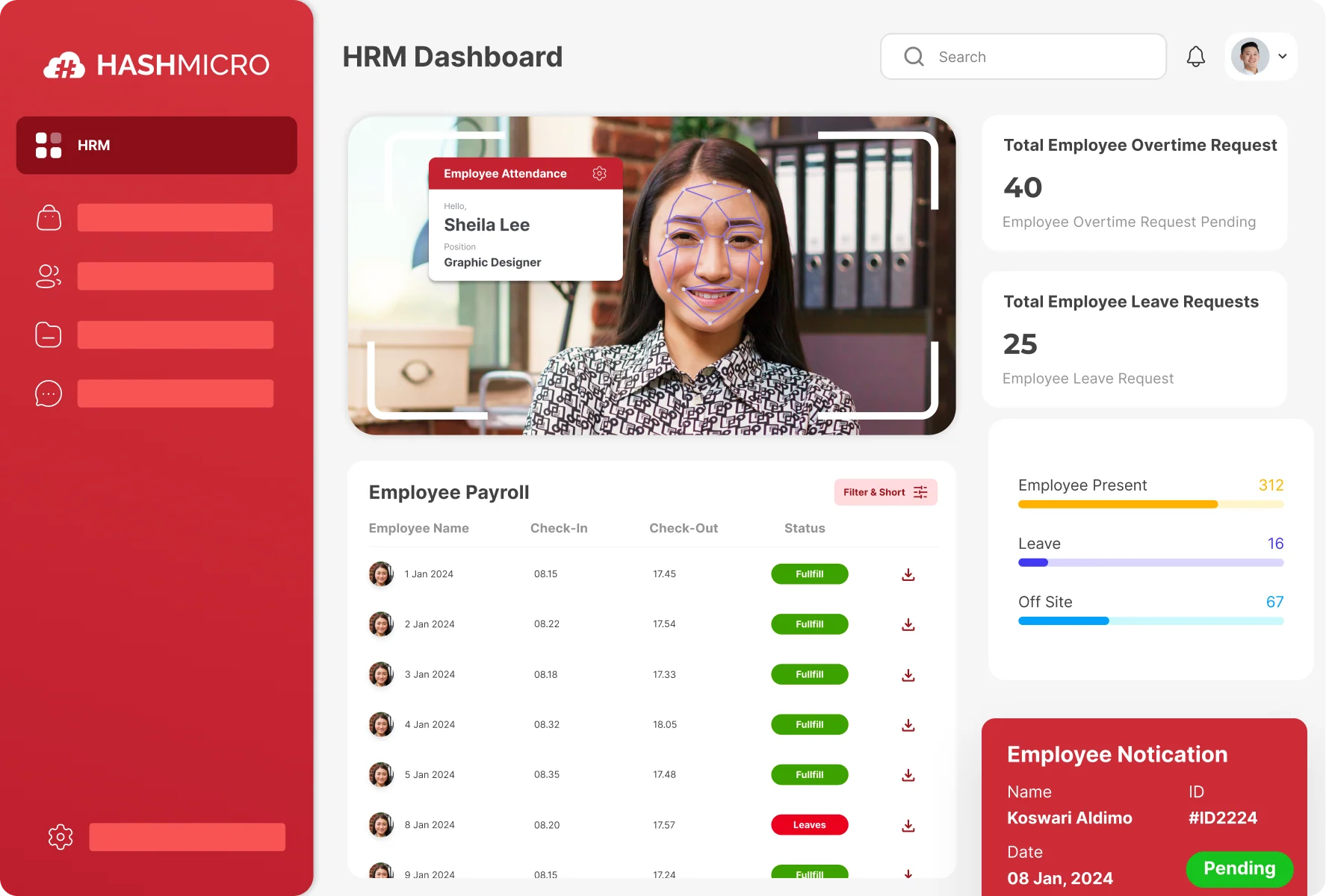Managing payroll and compensation can be overwhelming. The endless spreadsheets, manual calculations, and constant double-checking? It’s exhausting and leaves little room for focusing on bigger priorities.Yet, these tasks are essential to ensure employees are paid fairly and on time.
Pero hindi kailangang ganito palagi. Imagine a process so smooth that you never worry about errors or delays again. By adopting a more efficient approach, you can save time, minimize stress, and focus on creating a workplace where both the business and employees thrive.
This article will guide you through the essentials of compensation management, from its components to its strategic importance. You’ll also learn practical ways to improve your processes and keep your team motivated and happy.
Key Takeaways
|
Table of Contents
What is Compensation?
Compensation generally refers to the financial payment provided to an individual in return for their work or services. In a workplace context, compensation encompasses more than just salary or wages; it also includes commissions, bonuses, incentive pay, and additional perks tied to the employee’s role.
Employers understand the challenge of finding top talent. Developing a competitive compensation package is crucial for attracting and retaining the ideal employees who can drive the success of your business.
To secure top-notch talent, it’s important to offer attractive pay and comprehensive benefits. However, there’s no need to panic about costs; there’s always a way to strike a balance that benefits everyone involved.
How is Compensation Used?
Compensation serves as a strategic tool for management to support and enhance the company’s operations. It can be adjusted based on the organization’s needs, goals, and available resources. Compensation strategies are often utilized to:
- Attract and retain skilled employees.
- Boost morale and employee satisfaction.
- Reward and motivate high performance.
- Ensure fairness internally and externally.
- Minimize turnover and foster loyalty.
- Negotiate practices with unions effectively.
One of the primary objectives of compensation is to recruit and retain qualified employees. However, the availability and cost of talent are often influenced by market factors beyond an employer’s control.
While companies can establish and advertise salary ranges for new hires, these figures must align with those offered by competitors vying for the same talent pool. Hence, offering fair and competitive compensation retains top talent and improves the overall employee experience.
Components of a Compensation System
 Employees are more likely to perceive compensation as fair if it is based on a structured and systematic approach. Various compensation systems have been developed to assess the value of positions.
Employees are more likely to perceive compensation as fair if it is based on a structured and systematic approach. Various compensation systems have been developed to assess the value of positions.
1. Job Descriptions
These are essential for both compensation and recruitment systems, providing detailed documentation of job responsibilities, requirements, functions, duties, work environment, location, and conditions. Job descriptions can be developed for individual roles or broader job families.
2. Job Analysis
This process involves evaluating jobs to create accurate job descriptions. Methods include interviews, questionnaires, and direct observation to gather necessary data.
3. Job Evaluation
A systematic method to compare jobs and determine appropriate compensation levels. Common techniques include:
- Ranking: Ordering jobs by their relative value.
- Classification: Grouping jobs into predefined categories.
- Factor Comparison: Comparing jobs based on specific factors.
- Point Method: Assigning points to job elements for comparison.
4. Pay Structures
These provide a framework for standardized compensation practices. Pay structures typically include several grades, each with a minimum salary or wage and increments based on steps or ranges.
Step increments are especially common in unionized roles, where pay is determined through collective bargaining. Accurate payroll processing is a cornerstone of effective compensation management, so the company must also pay attention to this component.
5. Salary Surveys
These compile data on average salaries, inflation rates, cost-of-living indices, and salary budget trends. Surveys may be purchased from vendors or conducted in-house. When using third-party surveys, it’s crucial to consider their focus.
Whether they pertain to a specific industry, multiple industries, a single geographic region, or a broader area, make sure the data aligns with your company’s context. Using a HRIS system will help with automating and sorting out the data as well.
Examples of Compensation
Compensation packages vary widely across companies, with diverse options tailored to meet unique organizational needs. Below are the examples of compensation:
1. Annual Salary
Salaried employees receive a fixed annual rate, based on the value they bring to the organization, regardless of hours worked. These employees, often classified as exempt, are not eligible for overtime pay when exceeding 40 hours per week.
2. Hourly Wage
Hourly employees are paid a set rate for each hour worked, up to 40 hours weekly. Beyond that, non-exempt employees qualify for overtime pay, usually calculated at one and a half times their standard hourly rate, commonly referred to as “time-and-a-half.”
3. Raises
Salary or wage increases are typically tied to individual or team performance. Annual raises are a standard practice for both salaried and hourly employees.
4. Retirement Plans
Many companies provide retirement savings options, such as 401(k) plans. Employees contribute a small portion of their earnings, often matched partially by the employer. These plans are subject to vesting periods, which determine when the employer’s contributions become fully accessible, usually within one to five years.
5. Bonuses and Incentives
To encourage exceptional performance, employers may offer bonuses or incentives tied to specific, pre-defined goals. These supplementary payments reward employees for meeting or exceeding targets.
6. Health Benefits
Health-care benefits are a common inclusion in compensation packages. Employers typically cover a significant portion of the monthly premiums, with the remainder deducted from employees’ gross pay. Most companies provide multiple plan options, allowing employees to select coverage that suits their needs.
How Much Does a Worker’s Compensation Cost?
 The cost of workers’ compensation insurance in the Philippines varies depending on industry regulations and the nature of the work. Rates are influenced by factors such as employee risk levels and company payroll.
The cost of workers’ compensation insurance in the Philippines varies depending on industry regulations and the nature of the work. Rates are influenced by factors such as employee risk levels and company payroll.
While specific costs may differ, companies can expect the following considerations based on real-life scenarios:
- For low-risk jobs, such as office-based roles, the insurance rate may be relatively minimal, with fees calculated as a small percentage of the company’s payroll.
- For high-risk jobs, such as those in construction or manufacturing, rates are significantly higher due to the increased likelihood of workplace injuries.
For instance, a construction firm in the Philippines might allocate higher insurance premiums for workers operating heavy machinery, while a BPO company would face lower costs for their desk-based employees.
These costs are essential for compliance with local labor laws and for protecting both employees and employers from unexpected financial liabilities.
How to Apply for Compensation
The process for claiming workers’ compensation in the Philippines is governed by the Employees’ Compensation Program (ECP). While the specifics may vary slightly depending on the company and sector, employees who experience a work-related injury or illness should generally follow these steps:
- Document the Incident: Record the details of the injury or illness as accurately as possible. Include photos, if applicable, and the names of witnesses to strengthen your claim.
- Notify Your Employer: Report the injury or illness to your employer immediately. Employers are responsible for processing the claim through the Social Security System (SSS) for private-sector employees or the Government Service Insurance System (GSIS) for public-sector employees.
- Coordinate with SSS or GSIS: Verify with your employer that the claim has been submitted to the relevant agency. You may also follow up directly with the SSS or GSIS to ensure the claim’s progress.
- Appeal if Necessary: If the claim is denied, employees have the right to file an appeal with the Employees’ Compensation Commission (ECC). The ECC reviews cases and ensures fair treatment of employees under the ECP.
Compliance with the Employees’ Compensation Program is mandatory, and employers are required to ensure employees can access benefits without undue delays or complications.
Managing compensation doesn’t have to be stressful. Because, leveraging HRIS software in the Philippines can streamline your processes and ensure accuracy. However, you might wonder how much it costs, right? Click on the banner below to receive your personalized pricing plan!

Make Workers’ Compensation Hassle-Free with HashMicro HRIS System
 Managing workers’ compensation claims can feel overwhelming, especially when you’re juggling multiple responsibilities. Pagod ka na nga sa ibang trabaho, kailangan mo pa siguraduhin na maayos ang claims at compliance. Missing a step can lead to delays or even penalties, which no employer wants.
Managing workers’ compensation claims can feel overwhelming, especially when you’re juggling multiple responsibilities. Pagod ka na nga sa ibang trabaho, kailangan mo pa siguraduhin na maayos ang claims at compliance. Missing a step can lead to delays or even penalties, which no employer wants.
But what if there’s a simpler way? Imagine having a system that handles it all: automatically tracking incidents, generating accurate reports, and submitting claims directly to SSS or GSIS. Gaan ng buhay, di ba?
With HashMicro’s HRIS, managing employees has never been easier. From seamless incident tracking to automation tailored to Philippine regulations, it’s the solution every HR team needs. Below are the features of HashMicro to ensure that compensation is fair to both employees and company:
- Face Recognition and GPS Attendance with Preventive Fraud Attendants: Tracks attendance using facial recognition and GPS to ensure employees log in from designated locations only.
- Daily Worker and Hourly Worker Payslip Management: Automatically calculates wages for daily or hourly employees based on recorded attendance and timesheets.
- Roster & Dynamic Employee Working Schedule Management: Enables managers to create, adjust, and manage employee work schedules dynamically.
- Talent Management with KPI Tracking: Tracks performance against KPIs to determine bonus eligibility and other performance-based rewards.
- Employee Development & Training Plan with e-Learning Management: Suggests and manages training plans based on employee performance, improving future earning potential.
Conclusion
Compensation is key to keeping employees happy, motivated, and aligned with your company’s goals. Hindi lang ito tungkol sa sahod; kasama na rin ang bonuses, incentives, at benefits para sa mga empleyado.
Managing compensation doesn’t have to be stressful. HashMicro’s HRIS makes it simpler and more efficient. With features like payslip automation and GPS attendance tracking, mapapadali ang buhay mo sa HR management.
Why wait to simplify your HR and compensation processes? With HashMicro’s HRIS, you’ll save time, improve accuracy, and keep your team happy. Try our free demo today and see the difference for yourself!
FAQ on Compensation
-
What is the 13th Month Pay in the Philippines?
The 13th Month Pay is a mandatory benefit in the Philippines, requiring employers to provide employees with an additional month’s salary, typically paid out before December 24.
-
How is Overtime Pay Calculated in the Philippines?
Overtime work is compensated with an additional 25% of the regular hourly wage for work beyond eight hours on ordinary days, and 30% for work on rest days or special holidays.
-
How Does the Employees’ Compensation Program (ECP) Work?
The ECP is a government program providing compensation to public and private employees or their dependents in cases of work-related sickness, injury, or death.
-
What are the Mandatory Employee Benefits in the Philippines?
Mandatory benefits include Social Security System (SSS) contributions, PhilHealth insurance, Pag-IBIG Fund (housing development mutual fund) contributions, and 13th Month Pay.





































